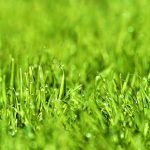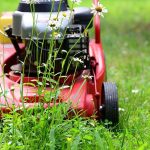Acworth, Georgia DIY Landscaping Solutions
For Acworth homeowners, having a nice green lawn is a great source of pride. A natural-looking, lush and beautiful turf grass is an important part of how they define “home.”
Anytime you are considering your options for Acworth landscaping installation, you may need to decide whether you should hire a professional lawn care service or do it yourself. In this article, we will be outlining some of the major considerations you will be facing so that you can be confident with a do-it-yourself approach to lawn care.
Soil Conditions In Your Landscape
Any project you undertake needs to have a solid foundation. When it comes to having a good lawn, the foundation is the soil it grows in.
If you have problems with your soil, then you will have problems with your lawn. Conduct a soil test. This will provide you with valuable information on what is in your soil and what should be added to it.
Some garden and lawn shops, as well as lawn care services, have do-it-yourself- kits available. In many states cooperative extension office test soil for either a low fee or for free. Testing and kits are also offered for a fee by some private companies. After you get your results back, you will see what you might need to add to your soil to achieve your dream lawn.
What kind of grass seed is best to plant in Acworth GA?
The kind of grass you should have in your yard will depend on where you are located. For individuals who live in subtropical zones such as the hot parts of Florida, the most likely local favorite is St. Augustine.
Other options are available for other parts of the country. In many areas, Bermuda or tall fescue are popular choices in Georgia Landscapes.
If you know what kind of grass is in your yard and are happy with its appearance and health, all you need to do is learn more about how to care for it well.
However, if you happen to be starting from scratch, be sure to choose a grass that will thrive within your local area. One great tip is to find the best-looking lawn in the neighborhood and then strike up a conversation with the homeowner.
They can probably give you good ideas on what kinds of watering schedules, fertilizer and seed may work well for your yard.
Growing Turf Grass In Shaded Areas Of Your Lawn
Most types of grass need to have four hours minimum of sunlight on a daily basis. If you happen to have grass in an area that gets a lot of sun, there are a few options to help you achieve the kind of lawn that you want.
The first one is to look for a seed mix that does well in the shade. For example, there are many fescue blends that work very well in the shade that Georgia’s tree canopy provides.
Planting A Grass In Your Lawn
For a majority of homeowners, it is a fairly simple process to plant new grass.
Aerate (loosen-up) the soil. Start with using a dirt rake to vigorously rake it.
Evenly spread your grass seed over the area you have tilled, For larger areas a seed spread can be used. Otherwise, you can just do it by hand.
Use a light soil layer to cover the grass seed.
Treated soils are available that provide the grass with balanced nutrients to encourage growth for new grass.
Water your Acworth, Landscape appropriately.
The soil surrounding the seed should be kept moist until any new grass has grown to be as tall as the surrounding grass. The seeds will drown if you over water.
Grass that is newly sprouted will dry up and eventually die if you don’t provide it with enough water.
Acworth Lawn Fertilization
Fertilizing provides all the nutrients your lawn needs in order to grow green and thick. You need to have a spreader to fertilize bigger lawns. There are two different kinds of spreaders: broadcast and drop.
With a drop spreader, the fertilizer is dropped directly beneath the spread.
With a broadcast spreader, the fertilizer is spread out away and out from the spreader in a pattern. Broadcast spreaders are able to cover bigger areas more quickly, while drop spreaders are considered to be more accurate.
Load fertilizers into the hopper on the spread. Every spread comes with a setting on it that enables you to control how much fertilizer you are laying down. In order to get the setting right on your spreader, follow the directions that are on the fertilizer bag.
First lay a perimeter line out of fertilizer. This involves moving the spread over the edges of your lawn and spreading fertilizer on it.
Once you have finished with the perimeter, start to walk the spread over the lawn back and forth in parallel lines. Turn off the spread as you near the fertilized perimeter so that you aren’t going over the same area again.
It will take time to spread fertilizing using this approach. However, the results you will get makes it very well worth it.
When are the best times for seeding and fertilizing your yard?
Both should be done during the cooler times of the fall and spring.
In southern states, the best time in the spring is from February through April. During the fall, you will want to do it in October or November. For the northern states, spring seed is done in April through early June, and fall seeding is done in September or early October.
Contact us today with any questions and follow our blog for more Lawn Maintenance Tips.






